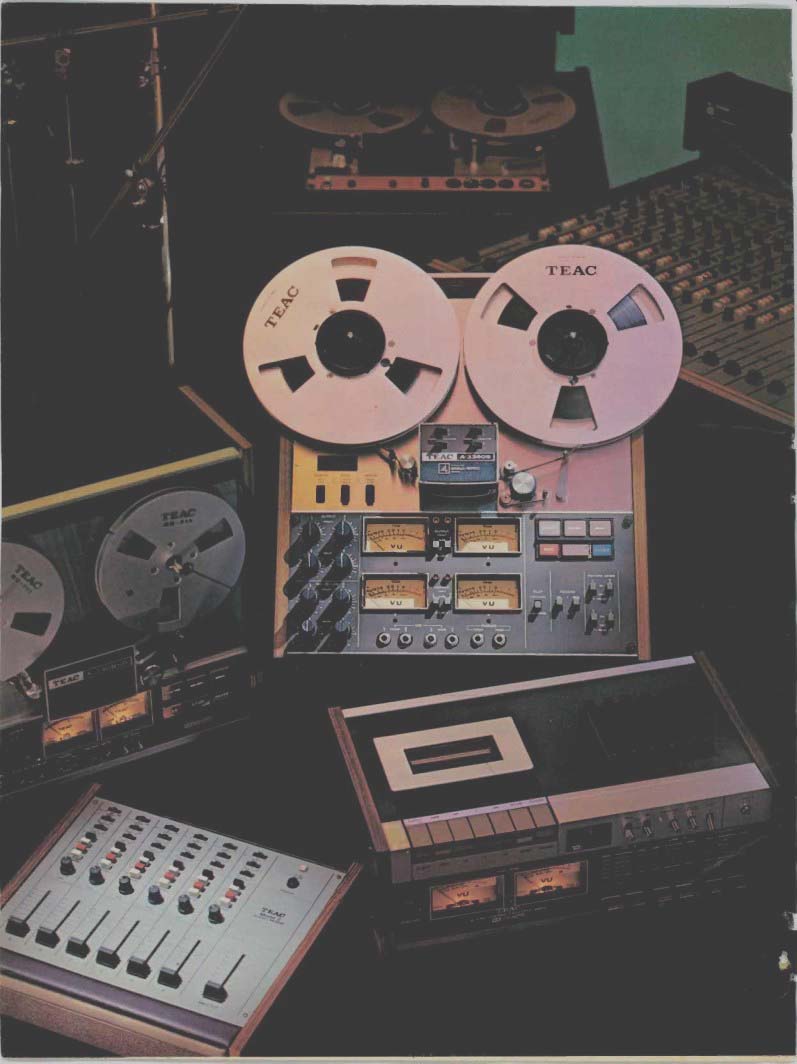
by CRAIG STARK
PHASING THE MUSIC
EVERY audiophile knows that for proper stereo reproduction his loud speakers must be connected "in phase." This means that when driven by the same mono source the cones of both channels' speakers will move back and forth in unison. If the left speaker cone is pulling in at the same time the right speaker is pushing out, the two are "out of phase," and the sonic results will be poor bass, loss of definite spatial location, and, for some people, severe psychoacoustic disorientation. The cure is simply to reverse the connections for one of the speakers.
Many home recordists, however, don't stop to think that their microphones are similar to loudspeakers, al though in reverse. As the microphones' diaphragms move back and forth in response to sound waves, they generate positive and negative electrical voltages that should arrive at the recorder in phase. If not, the stereo effect is likely to be upset, for the right and left channels will play back out of phase. In mono this is disastrous, for what you get is the difference between the two mikes' outputs.
There is one sure-fire test for correct phasing: hold the two mikes together in one hand (so they pick up an almost identical signal) and plug them into the left and right channels (better still, the same channel, if you have mixing facilities). Then set your amplifier to its "A + B" or "mono" position, and adjust the balance control so you'll hear only one speaker. If you keep the volume down enough to prevent "howling," or if you use a headphone, you can now speak into the mikes at a distance of one or two feet and hear your own voice through the speaker with or without bothering to actually record it on tape. It should sound normal with either microphone separately or with both of them held tightly together. If it sounds right with each mike alone but drops radically in level and becomes thin-sounding when they're together, the two are out of phase.
If your microphones are designed for use with unbalanced cables (a single conductor surrounded with a braided or spiral-wrapped shield, like ordinary hi-fi interconnection cables), fixing a phase reversal problem may be difficult. Write the manufacturer for his instructions.
Happily, however, almost all micro phones intended for serious recording are designed for balanced-line cables, which consist of two inner conductors plus the ground shield. At least at one end, such cables are terminated in a Cannon or Switchcraft "XLR"-type connector having three pins or mating holes.
The pin marked #1 is for the outer shield, and pins #2 and #3 are for the signal, so if you find that one or two microphones are out of phase with all the rest you use, it's a simple matter to re verse the #2 and #3 connections on the offending unit(s). If it's an extension cable that is out of phase, remember to change the connections at one end only.
In practical recording situations, even if all microphones and cables are in phase electrically, there still may be an acoustical phase problem arising from their physical placement. Beginning recordists often don't understand this, and attribute a ragged-sounding frequency response to their inability to pay $500 each for mikes. Whenever you use a number of microphones simultaneously, mixing them together into a single channel, a given performer is bound to be picked up not only by the microphone "assigned" to him, but also (though to a lesser extent) by the other microphones.
These others will be placed at different distances from him, so their contribution will be slightly time-delayed in relation to that of the primary microphone-that is to say, their phases will differ. A total cure is impossible, but based on extensive research, authority Lou Burroughs suggests that mikes be placed at least three times as far from each other as each is from its primary "target." With this ground rule and a little experimentation with the placement of musicians, good results should be possible.
========
Also see:
TEAC Multitrack Recording Equipment
Source: Stereo Review (USA magazine)